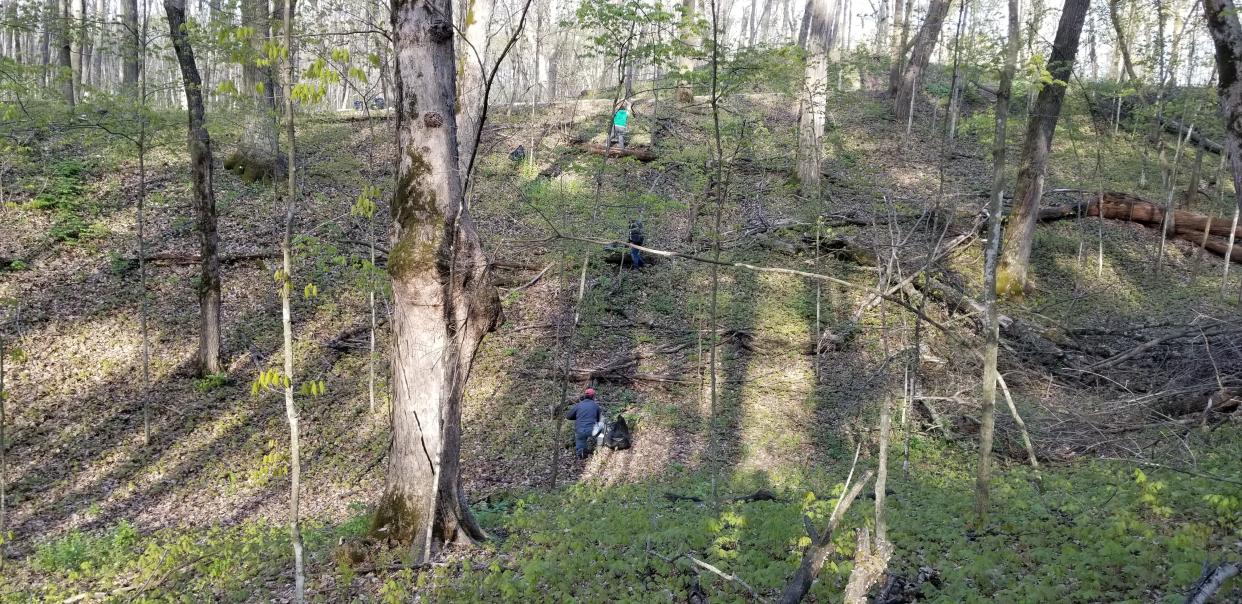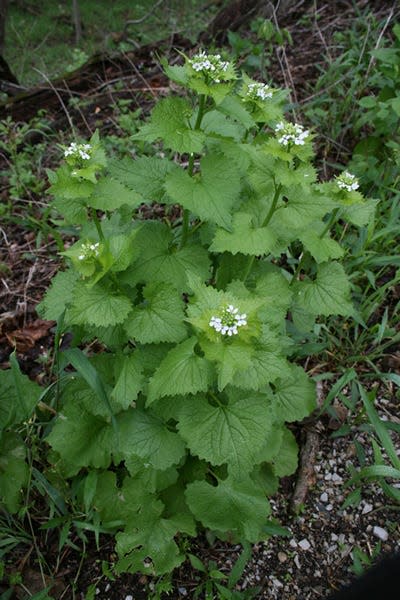How you can help save this state natural area in Fond du Lac County from an extremely aggressive invader

- Oops!Something went wrong.Please try again later.
NEW PROSPECT – The battle is on to save a state natural area in Fond du Lac County from an extremely aggressive invader, garlic mustard.
Friends of Kettle Moraine is organizing a series of garlic mustard pull workdays at Haskell Noyes Woods State Natural Area in the Kettle Moraine State Forest – Northern Unit to try to beat back this non-native, destructive invasive species.
Workdays are planned at the following dates and times:
May 2, 9, 16, 23 and 30, 4:30-7:30 p.m.;
May 3, 10, 17, 24 and 31, 4:30-7 p.m.; and
May 6, 13, 20, 27 and June 3, 9 a.m.-noon.
Those wishing to participate should meet at the Haskell Noyes Woods parking lot on County Road GGG just south of County Road SS east of New Prospect. For anyone arriving later than the scheduled start times, directions to that day’s particular work location will be posted at the parking lot.
Volunteers are advised to wear long sleeves, sunscreen, a hat and garden gloves, and to take insect repellent and drinking water.
In case of severe weather, organizers said they will cancel that day’s workday. People should call at least two hours prior to the scheduled start time of a workday for more details.
People can call Connie Ramthun at 920-533-8939 or Douglas Stadler at 920-979-1357 for more details.
What is garlic mustard, why is it a threat and how do you kill it?

Garlic mustard, according to The Nature Conservancy, can be identified by its triangular, heart-shaped leaves with toothed edges and white four-petal flowers. It was first brought from Europe in the mid-1800s for herbal uses and erosion control.
The Nature Conservancy said garlic mustard is a threat to the biodiversity of many native ecosystems. The plant spreads its seeds in the wind and gains a foothold in fields and forests by emerging earlier in spring than many native plants.
With regard to killing garlic mustard, The Nature Conservancy website states the following:
The ultimate goal in removing garlic mustard is to prevent seed development and spreading until the existing seed bank is depleted. Unluckily for us, this may take 2-5 years in any confined area. Vigilance is key, as garlic mustard can sprout up even when you're sure that you've gotten rid of every last one.
The best way to get rid of garlic mustard is manually:
Try to pull up the plants before they set seed, because the action of yanking the plant from the ground will spread the seed.
A good time to pull garlic mustard is after it rains, when it’s easier to get all or most of the long tap root.
After you have pulled the plants, bag them up and throw them out with your garbage; do not compost.
For more info, see the USDA's guide to the species.
What is Haskell Noyes Memorial Woods State Natural Area?
The following is from the Wisconsin Department of Natural Resources’ website:
Haskell Noyes Memorial Woods is a classic example of southern dry-mesic forest dominated by sugar maple and red oak, with smaller amounts of basswood, white ash, bitternut hickory and ironwood.
The site lies on an interlobate moraine formed between the Green Bay and Lake Michigan lobes of the Wisconsin stage of glaciation with numerous kames, kettles and ridges.
The forest was never clear-cut or heavily harvested during the logging era of the 19th century, leaving red oaks that established during the 1860s and 1870s. And unlike other forests, fire has not occurred on these moist soils for the past several hundred years.
The forest understory is open, with few shrubs but a rich spring flora and diversity of ferns. Plants include maidenhair, fragile, cinnamon and lady ferns, hepaticas, clustered black snakeroot, large flowered trillium, red trillium, may-apple, large-leaved shinleaf, large-leaved bellwort and wild geranium. A small area to the north is composed of swamp hardwoods and tamaracks. A high percentage of gravel is found in the soils and steep slopes are prone to erosion.
The land was purchased in 1947 to prevent imminent logging. Haskell Noyes Memorial Woods is owned by the DNR and was designated a State Natural Area in 1952.
Read more:
Road work: Road work season is starting soon in the Fond du Lac area. See if your commute will be affected.
Storm spotter training: Fond du Lac, spring brings threat of severe weather. How National Weather Service storm spotter training can help you prepare.
Pelican River Forest preserve: Republicans put a stop to the Pelican River Forest preserve. Conservation groups say they hope to keep the project alive.
This article originally appeared on Fond du Lac Reporter: Haskell Noyes Woods Natural Area in Wisconsin battles garlic mustard

